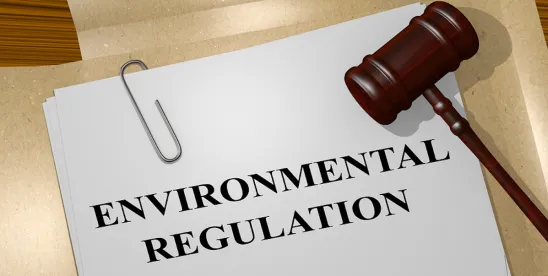Last week, several news outlets reported that the White House Council on Environmental Quality (CEQ) circulated a draft template dated April 8, 2025 among federal agencies to assist in updating their procedures for implementing the National Environmental Policy Act (NEPA). CEQ included a cover letter with the template clarifying that federal agencies may adopt, modify, or disregard the suggested procedures, which do “not establish new requirements, create legal obligations, or represent CEQ's final position on how agencies should implement NEPA.”
Nonetheless, the draft template includes notable potential departures from NEPA practice under CEQ’s previous regulations — originally adopted in 1978 — and appears to prioritize shorter environmental review periods and greater adherence to statutory time limits, while narrowing opportunities for public input.
Background: CEQ Authority and Recent NEPA Developments
Since the late 1970s, CEQ’s authority to issue binding NEPA regulations has been widely accepted, but as we reported last November and February, that assumption has recently been challenged. In 2024, several federal courts issued rulings finding that CEQ’s regulatory authority was insufficient to permit CEQ to issue binding regulations. And in January 2025, President Trump issued Executive Order 14154 (Unleashing American Energy), expressly directing CEQ to rescind all of its NEPA regulations.
In turn, starting in February 2025, CEQ initiated a process to rescind its longstanding NEPA regulations, and the regulations’ recission became final on April 11, 2025. During the preceding 30-day comment period, CEQ reportedly received more than 90,000 comments, for which it is currently formulating responses. CEQ is now working with federal agencies to realign their NEPA implementing procedures with the NEPA statute and the directives in the Executive Order; CEQ’s April 8, 2025 draft template is part of this effort.
Key Elements of the Draft Template
CEQ describes the draft template as preliminary and subject to further revision, but it nonetheless includes provisions that could reconceptualize how federal agencies conduct NEPA reviews. Key elements include:
- Definition of “Major Federal Action.” Agencies are encouraged to adopt a “presumptive (but nonbinding) monetary threshold,” based on project cost of economic impact, above which an action would be deemed “major” for NEPA purposes. Under the recently rescinded CEQ NEPA regulations, a “Major Federal Action” referred to an activity or decision subject to substantial Federal control or responsibility and was generally defined to include certain categories of projects, such as grants of permits or adoption of polices, plans, or programs, or where the Federal agency was “[p]roviding more than a minimal amount of financial assistance” and had the authority to deny that assistance.
- Optional Public Comment and Draft Publication. Agencies are required to solicit input only from other federal, state, tribal, and local agencies with jurisdiction or special expertise, and “may” request public comments. Agencies “may” release a pre-decisional draft environmental document for public comment but are not required to do so. Further, agencies are only required to solicit public feedback during the “scoping” stage of the action. This is a departure from a longstanding requirement under the NEPA regulations to publish a draft analysis and solicit public comment on the draft before preparing the final document.
- Strict Adherence to Statutory Timeframes. The template emphasizes that an Environmental Assessment (EA) (i.e., shorter analyses for actions that do not have reasonably foreseeable impacts on the environment, or for which impacts are unknown) should be completed in one year, and an Environmental Impact Statement (EIS) (i.e., full analyses for actions that have reasonably foreseeable impacts) should be completed in two years. Agencies are instructed to issue the analyses “in as substantially complete form as is possible” at the end of the applicable timeframe unless they secure a deadline extension. This provision reasserts the statute’s requirements as reflected in 42 U.S.C. § 4336a(g)(1). However, in contrast to the prior NEPA regulations, the draft template reduces the bases under which an agency may extend the completion timeframe.
- Page Limits.The template recommends that EAs not exceed 75 pages and EISs be limited to 150 pages (with extensions up to 300 pages where justified). Agencies are expected to certify that the analyses reflect a good faith effort to balance NEPA’s key considerations with the recommended page limits. This provision reiterates the statute’s page limits as reflected in 42 U.S.C. § 4336a(e).
Implications and Next Steps
The proposed approach marks a departure from four decades of NEPA practice, especially regarding the timing and circulation of draft environmental documents and formal opportunities for public comment.
At this stage, it is unclear whether federal agencies will incorporate the template’s recommendations into their respective, revised agency procedures. CEQ has characterized the draft template as a preliminary document, and further modifications may follow as agencies provide feedback.





 />i
/>i
